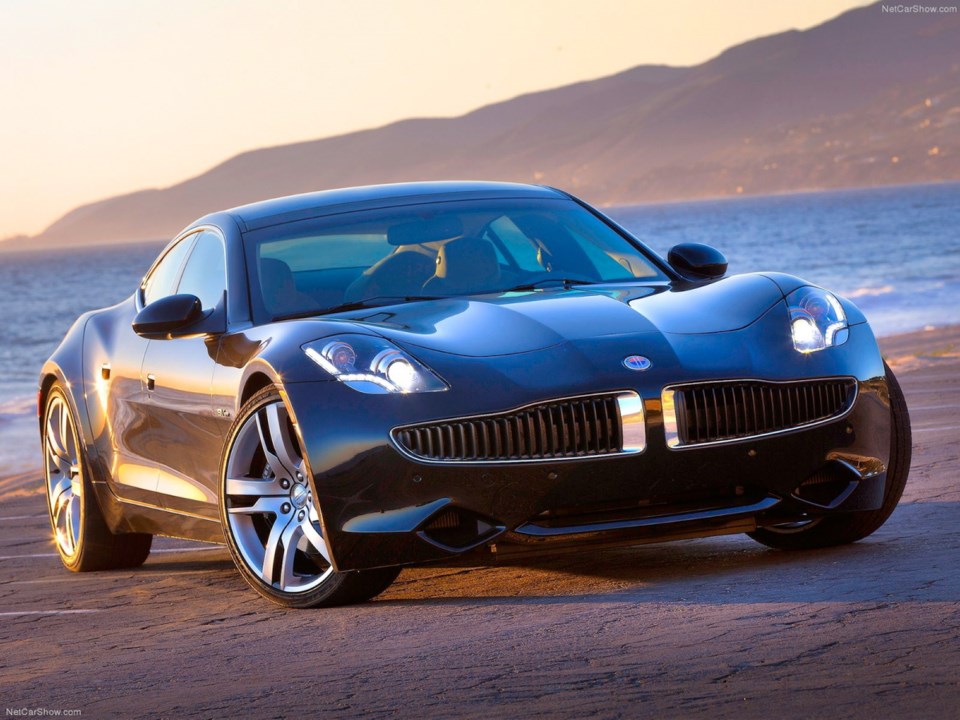The Sleuth hears that plans to revive the moribund Fisker brand are looking pretty good. The Wanxiang Group of China, Fisker’s current owner, is planning to ramp up production of the $100,000 US Karma hybrid luxury car on or before mid-2015. That would be an impressive feat since production at its plant in Finland was halted in November 2012 after just 1,800 vehicles were built. That was also shortly before the departure of founder Henrik Fisker and a year before the automaker went bankrupt. The Spy Guy also understands that Wanxiang plans to give the Karma a sprucing, likely limited to interior materials, wheel designs and other non-structural and non-mechanical components. Previously, Wanxiang announced it would eventually move production of the Karma to the United States and roll out a smaller and less expensive model called the Fisker Atlantic.
Toyota looks to aluminum to lighten its fleet: Following on the heels of Ford’s new aluminum-bodied F-150 pickup, other automakers are considering similar moves. Sources are telling The Sleuth that Toyota will make at least a partial move to aluminum body panels for some Lexus models, beginning with the 2016 RX 350 hatchback wagon that will feature a hood and tailgate made from the alloy. Also in the planning stages is the next-generation Toyota Camry that will use an aluminum hood. Apparently, the move to aluminum has the steel industry fighting back with claims that new processes being developed will allow for metal body panels to be made as light and as strong as aluminum. Reducing vehicle weight allows car companies to use smaller engines that will help to meet stricter upcoming fuel-economy standards.
Not-so-mini Minis: It appears that, despite the obvious implications of the company’s name, Mini brand owner BMW no longer feels constricted by history or convention to continue restricting its Mini model lineup to only small cars. Although there are no plans to go large in the conventional sense, one model, the Countryman, will expand when the second-generation model arrives for the 2017 model year. That’s because its platform will also be used by the next BMW X1 utility wagon. Interestingly, The Spymaster hears that the same turbocharged three- and four-cylinder engines that power the smaller Mini Cooper and its progeny will also be used in both front- and all-wheel-drive versions of the Countryman. That’s a true testament to their performance.
Texting while driving? There’s a gun for that: People who send and/or receive text messages while behind the wheel pose a serious threat to themselves, their passengers and to nearby drivers. However, technology might finally be catching up with these dimbulb miscreants. Recently, The Sleuth was made aware that ComSonics, a company that designs and manufactures handheld radar guns, is close to marketing a similar device that can pinpoint outbound text messages emanating from a moving vehicle. Once perfected, which is expected to be very soon, the text gun should be able to pinpoint not only the source text signal, but zero in on the specific individual (e.g. the driver as opposed to passengers) within the vehicle doing the texting. Surprisingly, texting while driving is still legal or partially legal in Arizona, Montana, Mississippi, Oklahoma and Texas. In parts of Canada, however, the fine is close to $200 and costs drivers several demerit points.
A sob for Saab: The Sweden-based automaker that was until a few years ago part of General Motors could finally be down for the count after a second bankruptcy recently halted the brand’s limited production. Saab has now furloughed its 200 workers, as the company’s backers have yet to bail it out. Meanwhile, a major supplier is demanding that Saab be liquidated so it can be paid.
Dang, that’s fast: With the Nissan GT-R hitting 60 mph (96 km/h) from rest in less than three seconds, it sure took a while for a few rivals to get in the same ballpark. News has finally come to The Sleuth that the 2015 Corvette Z06 can bust the three-second barrier, as can the Dodge Charger/Challenger Hellcat. The shocking part is that both cars have at least 100 horsepower on the Nissan, which means that zero-to-60-mph times really come down to one thing: traction. The Nissan is all-wheel-drive.
